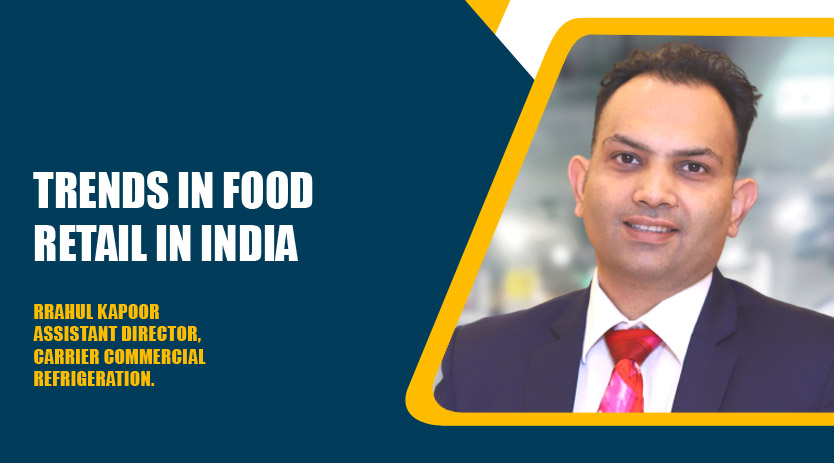Food and grocery, the largest segment in the Indian retail sector, has an opportunity worth $570 bn and accounts for 66 per cent of the country’s total retail spending.
Globally We produce food worth serving 10 Billion People; however, because of food waste across the food chain from Farm to Fork, over 30 per cent goes waste (which means not excellent or fit for human consumption). Hence, many of us still sleep hungry or don’t get the desired nutrients from our food to be healthy enough. With these tough words, I would like to set up the context for this article and why Food retail and changing trends are essential.
Food and grocery are the most significant segments in the Indian retail sector, with an opportunity worth $570 bn and accounting for 66 per cent of the country’s total retail spend, as per a report done by Invest India forum Organised food and grocery retail market to reach $60 bn by 2025. The market is expected to grow at a CAGR of 8 per cent, supported by macro drivers such as increasing per capita income, urbanisation, and rising nuclear families. Conversion from unpackaged to packaged, premiumisation, and demand for convenience are some key drivers at a segment level.
Due to evolving lifestyles and purchasing habits, more consumers are shopping at modern retail stores and stocking up on groceries instead of shopping frequently at neighbourhood Kirana’s. Convenience stores have also become popular in urban clusters to cater to the increasingly busy lifestyle.
Although conventional categories like Staples and Fresh account for ~80 per cent of the total food retail spend, emerging categories of packaged snacks, confectionery, and beverages are overgrowing at a compounded rate of 15 per cent. Increasing awareness around health and wellness is set to shape consumer preferences across categories increasingly.
Hence considering the above points, it would be wise to assume that India’s food retail market and customer habits of picking up retail food products are going to change for good.
Current market drivers are-
- Low-cost Products
- Off-the-shelf available products
- Simple Glass door chiller & Freezers
- Plug-in Cabinets
However, moving forward, we anticipate the buying trend to change towards:
- More Efficient Cabinets (with electronic motors, EEV, LED Lights & better coil design);
- Remote Cabinets (Easier to Install multiple cabinets with Inverter Condensing Units to save power as well as operate with low noise levels)
- Cabinets for the product type (Industry produces separate cabinets for Dairy, Meat & Fruit & Vegetables, considering their storage temperature requirements);
- Energy Labeled products (This will reduce the import of lowcost inefficient products to India).
What does this all mean for the India Food retail Industry?
- India ranked No. 2 in the Global Retail Development Index (GRDI) in 2021.
- The retail sector in India contributed ~800 Bn to India’s GDP in FY20 and employed 8 per cent of its workforce (35+ Mn). It is expected to create 25 Mn new jobs by 2030.
- Increasing demand for organised retail space has helped create a capacity of ~120 Mn square feet (MSF) in retail length across major Indian cities. Major Indian cities include Delhi (23.7 MSF) and Mumbai (16.7msf).
- 10 per cent Contribution to India’s GDP
- 8 per cent share in India’s employment
- 10 per cent Growth rate of the retail sector over 2021-32
- 12 per cent share of Organised retail of total retail market.
As I conclude, I would like to emphasise that if there was ever a time to think about buying patterns and the logic behind the correct purchase, it is now. The refrigeration industry has made some bold investments in the last few years to be future-ready and is ready to serve the retail industry now.
Cookie Consent
We use cookies to personalize your experience. By continuing to visit this website you agree to our Terms & Conditions, Privacy Policy and Cookie Policy.













